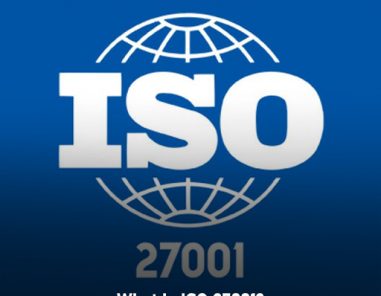
What is ISO 27001
The International Electrotechnical Commission (IEC) developed the ISO 27001 i...
Read MoreThe ISO 14001 standard is the leading standard for designing and implementing an environmental management system (EMS). It provides a framework that guides organisations to create an efficient EMS to enhance their environmental performance. The EMS based on ISO 14001 minimises the negative impacts of an organisation’s operations by complying with the environmentally oriented requirements and applicable laws and regulations. The ISO Council helps you to get familiar with the concept, importance and structure of ISO 14001.

The ISO 14001 certificate has become the leading international standard for developing, designing and implementing an environmental management system. The standard is commonly referred to as ISO 14001: 2015 as the most recent version was published in 2015.
Member countries of the International Organization for Standardization (ISO) had to vote on the requirements of the standard before it could be released. As a result, the standard is internationally recognised and accepted by most countries worldwide.
An EMS is a set of policies, plans and procedures that define the factors which govern how an organisation interacts with the environment. This system is customised to the individual needs of a specific company as each company has unique legal requirements and unique environmental interactions that are specific to their business processes.
However, ISO 14001 provides a framework that guides organisations in the creation of an EMS which suits their individual needs without missing any important elements that can impact the efficiency of their system.
Reducing the negative impact caused by business operations is the biggest challenge that many organisations face today. One of the significant benefits of implementing an EMS is the recognition that the organisation is among the few attempting to minimise their environmental footprint. The attempt to improve their environmental performance can enhance an organisation’s relationship with the customers, the public, stakeholders and the community at large.
In addition to enhanced public image, many organisations can save financially through the implementation of an EMS. This is because an EMS reduces incidents that can lead to liability costs, helping to maintain insurance premiums at reasonable rate.
Savings also occur due to input materials’ conservation and energy reduction. The benefits of improved cost control and greater public image cannot be overlooked when deciding to implement an EMS. With the benefits of ISO 14001, there are more than these.

The structure of the ISO 14001 is split into ten sections. The first three clauses are introductory in nature, and the last seven contain requirements for the EMS. The fourth section discusses the requirements for understanding the organisation to implement the EMS. This section, namely the context of the organisation, outlines the requirements for identifying internal and external issues that may affect the processes of the EMS.
The fifth section talks about leadership requirements. As the top management is instrumental in implementing the EMS, the standard outlines how the senior executives can demonstrate their commitment to EMS. The fifth clause also defines and communicates environmental policies and responsibilities
The sixth section focuses on planning. A plan must be created for the ongoing function of the EMS. Risks and opportunities of the EMS need to be assessed and environmental objectives need to be identified. Only when the ecological objectives are identified can plans be made to accomplish these objectives.
It is necessary for the organisation to conduct in-depth assessments to determine which organisational processes interact and impact the environment the most.
In addition to assessments, this section also asks organisations to identify the legal commitments required for compliance.
The seventh section deals with support, highlighting all the resources that the management needs to acquire for the effective functioning of the EMS. Examples of these requirements include awareness, competence, communication and controlling documented information.
Section eight talks about all aspects of environmental concerns. The operation section helps organisations identify potential emergencies and plan responses.
The ninth section focuses on performance evaluation and includes the requirements to ensure that the in monitoring of the EMS is appropriate. The last section includes the requirements to improve the EMS with time. This includes assessing nonconformities and taking corrective actions.

There are several benefits of ISO 14001 that companies can enjoy, irrespective of their size or sector. The most evident benefit is improved image credibility. As customers are assured about the organisation’s commitment to reducing their environmental impacts, their image is enhanced. Good public image also leads to improved community relationships.
One of the lesser known advantages of implementing an ISO 14001 is better employee satisfaction. When given a choice between working for an organisation that demonstrates care and concern for the environment and for one that does not, majority of the people choose the former.
The very fact that the company is attempting to improve its environmental performance provides meaning to the job. Employees feel that they are doing something valuable. Furthermore, employee focus and retention is improved by engaging the employees in a group effort to reduce the environmental footprint.
ISO certification gives your organisation competitive edge. By helping you increase operational efficiency and overall product consistency, your business credibility and authority will soar to new heights.

Copyright © 2024 The ISO Council | Privacy Policy